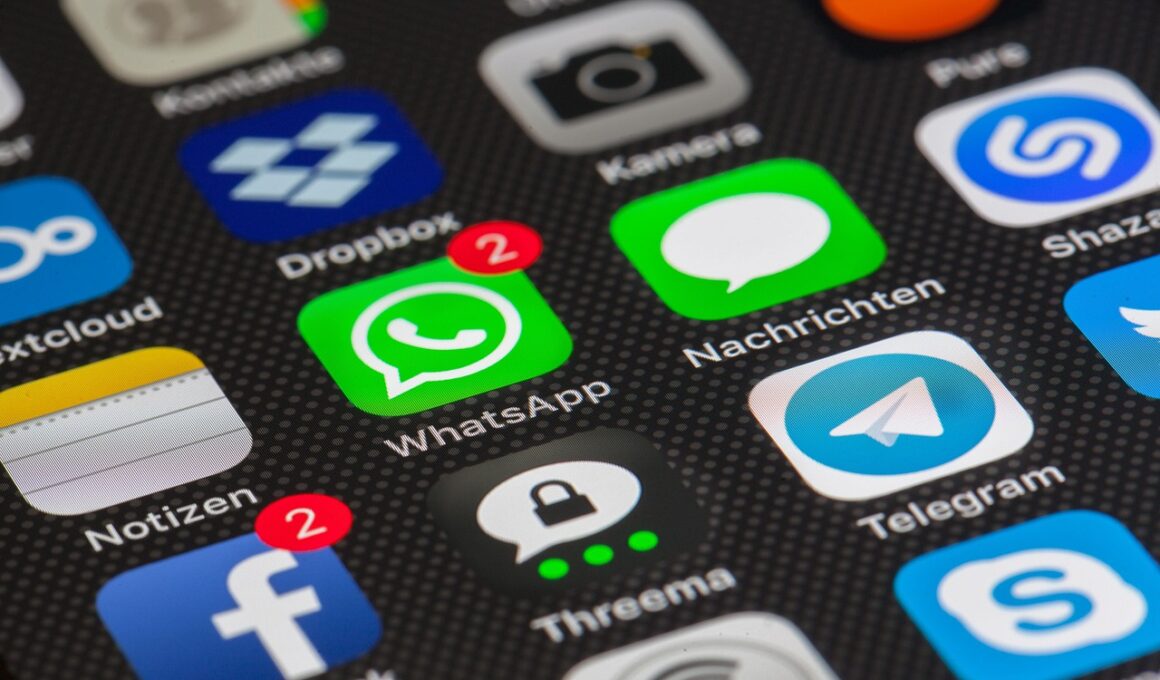The Role of Chatbots in Mobile Social Media Crisis Management
Mobile social media has transformed how brands and companies communicate during crises. Brands can now engage directly with their audiences, addressing concerns in real-time. This shift demands a well-prepared strategy, one of which involves utilizing chatbots effectively. Chatbots act as the first line of communication, providing consumers with immediate responses. Their automation allows businesses to manage inquiries more efficiently, alleviating pressure on customer service teams. The integration of chatbots within social media platforms offers numerous benefits. These include seamless communication, rapid dissemination of information, and round-the-clock assistance. Through proactive messaging and prompt responses, companies can effectively control narratives and mitigate the spread of misinformation during critical periods. Their analytical capabilities allow organizations to identify emerging issues, making it easier to strategize and react swiftly. Nevertheless, the effectiveness of chatbots hinges on their programming and integration within existing systems. If designed properly, they can lead to improved customer satisfaction. Ultimately, speeding up the resolution process during crises contributes to brand loyalty and reputation resilience in an ever-changing digital landscape. Therein lies the importance of chatbot technology in crisis management strategies.
Chatbots not only streamline communication but also enhance engagement during crises. By providing instant responses to user queries, they empower consumers with the information they need. Users appreciate immediate answers, fostering trust and reassurance during turbulent times. The ability of chatbots to manage multiple inquiries simultaneously is particularly beneficial for brands facing high volumes of interactions during a crisis. Unlike human agents, chatbots do not experience fatigue and can operate continuously. This uninterrupted service ensures that no customer feels neglected, ultimately improving overall satisfaction rates. Moreover, chatbots can be programmed to recognize common crisis-related themes or keywords. This feature allows them to prioritize critical inquiries and direct them to human representatives when necessary. Additionally, chatbots can gather data on customer sentiment and frequently asked questions. This information is invaluable for companies looking to adjust their crisis communication strategies promptly. Businesses can utilize insights gained from chatbot interactions to tailor their messaging effectively, ensuring that they address the most pressing concerns. With the right setup, chatbots can alleviate pressure from human teams while simultaneously boosting customer confidence and loyalty.
Proactive Engagement through Chatbots
Proactive engagement is another significant advantage of chatbots in mobile social media crisis management. By anticipating potential issues, companies can deploy chatbots to initiate conversations with consumers before problems escalate. This initiative helps in demystifying complexities surrounding a crisis. By doing so, brands can minimize misinformation and prevent the spread of panic among audiences. Chatbots can be programmed to trigger alerts or updates based on specific user interactions or social media trends. This level of engagement shifts the narrative from reactive to proactive, reducing the chances of crises spiraling out of control. Furthermore, the conversational nature of chatbots helps create a sense of community. By providing a platform for customers to voice their concerns or ask questions, brands can foster an environment of transparency. Customers appreciate feeling heard, which enhances their relationship with the brand. This connection is crucial during crises, where consumer trust is paramount. Finally, by using chatbot technology for proactive engagement, businesses can reinforce their commitment to customer care. This swift and thoughtful approach is integral to preserving brand equity in the digital age.
In times of crisis, a consistent message is vital, and chatbots play a crucial role in ensuring message uniformity. Automated responses eliminate discrepancies that can arise from human interaction. This consistency helps maintain the brand’s voice, ensuring that all information released aligns with the company’s established messaging strategy. Additionally, the capacity to tailor chatbot responses based on varying scenarios enables organizations to address distinct concerns with precision. For instance, if a crisis impacts different demographic segments differently, chatbots can be programmed to deliver customized messages suited to each audience. This tailored approach not only deepens engagement but also demonstrates responsiveness to specific audience needs. Moreover, brands can utilize chatbots to disseminate updates across multiple platforms. This multi-channel communication ensures that consumers receive consistent information, regardless of their preferred social media platform. The interconnectedness of various digital communication methods allows brands greater control over their messaging landscape. As such, adapting chatbot technology to manage crisis scenarios effectively allows brands to stay ahead of evolving consumer expectations, while at the same time preserving their reputation and trustworthiness.
Challenges and Considerations
Despite the myriad benefits of chatbots in crisis management, several challenges must be considered. One of the primary concerns is ensuring the bot’s ability to comprehend and effectively engage with users. If a chatbot fails to understand user inquiries or responds inaccurately, the situation can worsen rather than improve. Therefore, investing in robust natural language processing (NLP) technologies is crucial for optimizing chatbot performance. Furthermore, the risk of relying too heavily on automated responses is another challenge. Customers may feel frustrated if they cannot connect with human representatives during complicated situations. To mitigate this, companies should design chatbots with features that allow seamless transitions from automated to human communication when necessary. Additionally, as crises can be unpredictable, pre-programmed responses may not always fit emerging scenarios. It is essential for organizations to regularly update and refine their chatbot scripts. Regular evaluations can ensure that chatbot capabilities evolve in line with contemporary crisis management methodologies. Consequently, a balanced integration of human touch and automation can yield more effective outcomes, ultimately enhancing customer experiences during tumultuous times.
Ultimately, the integration of chatbots into mobile social media crisis management strategies enhances brand responsiveness and customer care. As technology continues to evolve, so too will the ways in which brands interact with their audiences during crises. Understanding consumer behavior and preferences will be essential for designing chatbot algorithms that align with user expectations. Brands that prioritize empathy and emotional intelligence within their chatbot interactions will likely find greater success. A well-designed chatbot can express understanding and reassurance, addressing customer concerns empathetically. This personalized approach can resonate powerfully with consumers, reinforcing the brand’s commitment to customer service. In the ever-changing landscape of mobile social media, companies that recognize the importance of technological solutions like chatbots will be better equipped for crisis management. Beyond immediate response, building relationships through engaging chatbot interactions can lead to long-term loyalty. As consumers increasingly turn to social media for support and communication, the role of chatbots will only grow. Their ability to provide real-time solutions can be a significant differentiator in protecting brand reputation. Consequently, businesses should not underestimate the impact of chatbots during crises, as they represent an integral component of the modern digital communication strategy.
Conclusion
In conclusion, chatbots are invaluable assets in mobile social media crisis management. They provide immediate, consistent communication that can effectively manage consumer concerns. Businesses adopting this technology can enhance their crisis response strategies and foster customer loyalty. When utilized correctly, chatbots streamline communication, facilitate customer engagement, and offer unique insights. Their ability to operate continuously ensures that brand representatives can focus on complex, nuanced inquiries. By embracing advancements in chatbot technology, companies position themselves strategically in today’s fast-paced digital environment. Crises are inevitable, but how brands respond shapes their long-term reputation. As organizations adapt to these challenges, the role of chatbots will continue to expand. By integrating artificial intelligence and machine learning, chatbots will enhance their effectiveness, becoming even more adept at addressing consumer preferences. Continuing to cultivate this technology ensures brands can confidently navigate any crisis they encounter. As the landscape of mobile social media evolves, so too must the strategies organizations employ. The future of communication lies in the hands of adaptable, intelligent systems that can effectively manage interactions while securing ongoing trust in challenging situations.
The integration of chatbots within mobile social media strategies can lead to faster resolution times and increased transparency, ultimately benefiting both businesses and consumers during turbulent periods.


